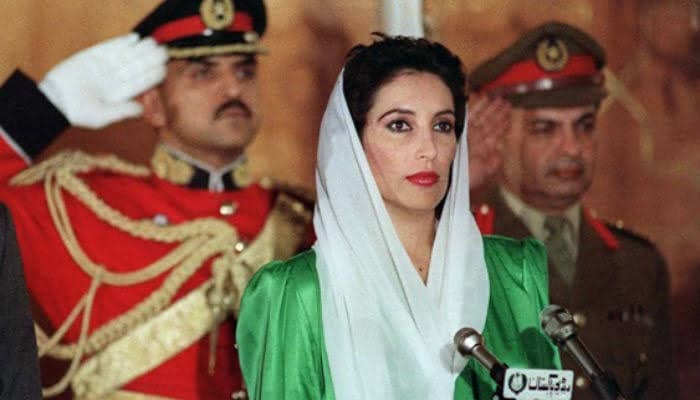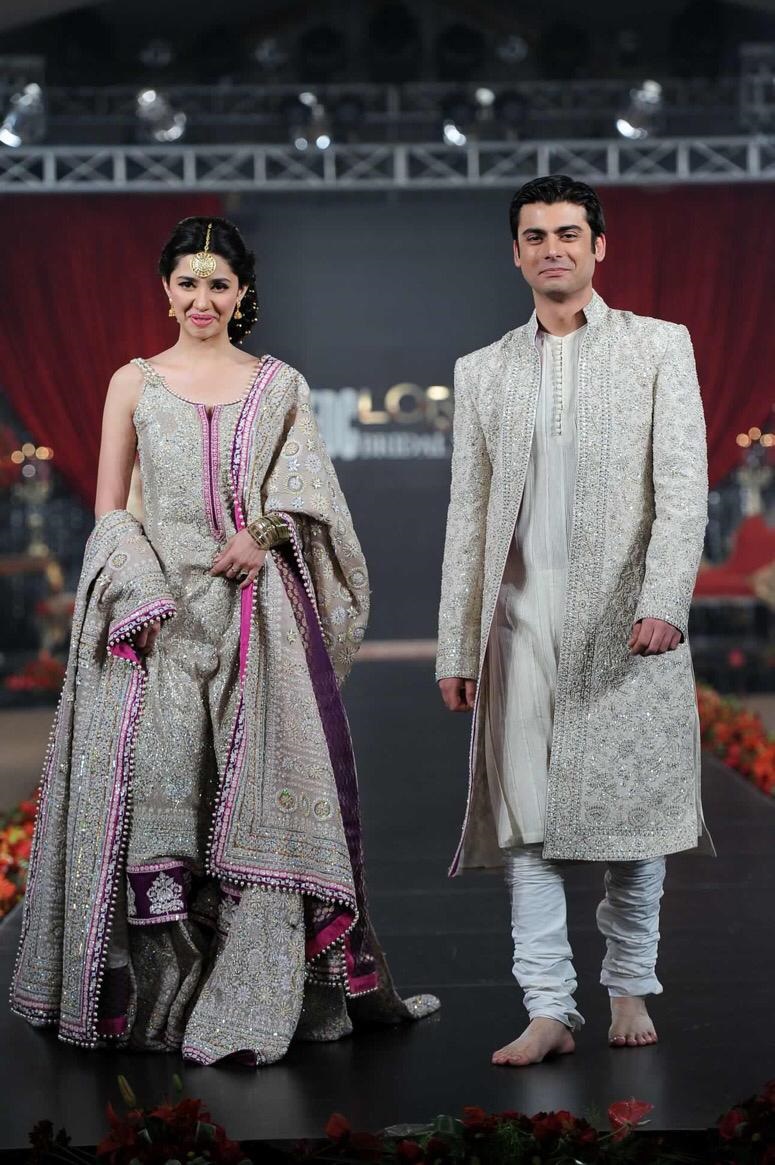Written by: Haroon Shuaib
Posted on: April 12, 2023 |  | 中文
| 中文
Herald's fashion section defined the latest trends in the country
’80s arrived with Pakistan’s national wardrobe going through an overhaul, following the state’s political direction. For men, the achkhan also known as sherwani, made a comeback for more ceremonial occasions while shalwar kameez and waist coat was preferred as a close substitute for casual everyday wear. State institutions, from PIA to PTV, made modest shalwar kameez and dupatta or long scarves a must for women. Saris and western inspired dresses for women disappeared from public view. On television screens in every home, women announcers to actors, all were required to follow this dress code. The joke that went around in those days was that a female character would wake up in a drama with her dupatta neatly pinned around her head. These institutional interjections obviously seeped into public preferences. Women from more conservative segments of society found their sartorial inspiration from Mughal cuts such as Anarkalis, Angrakhas, Choridars, and Peshwaz. In April 1985, the National Geographic magazine featured stunning photographs of classical singer Tahira Syed playing the sitar in the Shalimar Gardens of Lahore dressed as a Mughal princess.
’80s were also the most polarizing years in Pakistani wardrobe trends. A counter-culture of youth based on disco sensibilities had also come into being amongst the youth and would make sporadic expression in public sphere, often eliciting state-level reprimand. Things started loosening up by the second half of the ’80s. Defying the conservative institutional level dictates, youth of the time rebelled through their wardrobes whenever possible. Siblings Nazia and Zohaib Hassan, not only introduced a new style of music but also a new sartorial culture. For young women, structured shalwar kameez with round hemlines were the order of the day. Less permanent innovations were done through Patiala shalwars and puffed sleeves. Shehnaz Shiekh, Marina Khan and late Yasmeen Ismail wore Tee Jays in 1985 cult classic drama serial Tanhaiyan. Plastic chunky jewelry, bright colored patent leather court shoes, and loud make up were signature accessories throughout ’80s. Babra Sharif, Babita, and Shabnam was reflecting the same on big screen.
Young men were also experimenting with equally extreme statements. Buttoned down shirts with the top two or three buttons undone to expose chest hair, puffed sleeves, long tightly permed hairdos, leather or denim jackets, and white trainers were considered high fashion for men. Baggy pants, shirts, and sweaters were popular and one is still left wondering how they gained so much popularity. With Vital Signs, Pakistan’s first boy band taking the country by a storm, its front man Junaid Jamshed and his ilk were defying the more conservative trends of dressing.
The end of ’80s was marked with a new political and cultural turn. Benazir Bhutto, at 35 years old took oath in 1988 as the youngest elected leader in the Islamic world, and the youngest female Prime Minister ever elected. Dressed in the green of Pakistan’s flag with puffed sleeves and a white dupatta, she presented a good crossover between tradition and modernity through the Maheen Khan designed attire.

Benazir Bhutto in her green and white puffed sleeved Maheen Khan dress, ready to take oath as the Prime Minister of Pakistan
The 1990s was a time when the country was experimenting with democracy after a hiatus of eleven years, this was reflected in the wardrobe choices of both men and women. The fashion scene became more and more edgy and a whole new breed of designers emerged such as Rizwan Beyg, Nilofar Shahid, Sana Safinaz, Shamaeel Ansari, Amir Adnan, Faiza Samee, Umer Sayeed, Shehla Chatoor, Deepak Parwani, Amir Adnan, and Bunto Kazmi. The sophistication and class that the 90s fashion exuded in Pakistan was unparalleled. It was an era of boldness, glamour, drama and creativity. Half sleeve dresses became popular, which were worn with thick chunky platforms. Metallic look was in vogue, with smokey eyes and matted lips. Robes for women made an appearance, and the iconic silk robe by Sehyr Saigol defined a new dimension for Pakistani women’s wardrobe. Details in materials and embroidery became erratic. Three-piece shalwar suits were introduced, and chiffon became commonplace as the material of breezy and flowy dresses for women. Men too were wearing simpler and sharper cuts, and the concept of metrosexual men first emerged on Pakistan’s fashion scene.
The ’90s also saw the country experiencing a sudden mushrooming of fashion publications such as MAG, SHE, Women’s Own, XTRA, Men’s Club, Libas and DIVA. A whole brigade of female models such as Vaneeza Ahmed, Iraj Manzoor, Aaminah Haq, Iffat Omar, Alia Latif aka Bibi, Aliya Zaidi, Zoella Alam, Atiya Khan and Zainab Qayoom ruled the ramp. Amongst the male models Farhan Ali Agha, Farooq Mannan, Umair Butt, Nael and Imad Irfani were the front runners. Herald Magazine’s fashion pages firmly placed fashion on the modern cultural landscape of the country, with a whole new breed of stylists, photographers and make-up artists.
It would be fair to say that since the beginning of the 20th century, Pakistan’s fashion scene has grown by leaps and bounds towards gaining an industry status. Boutique Haute Couture trends have gradually morphed into ready-to-wear fashion options. Every year new brands appear, and quickly grow to greater commercial success, sometimes at the cost of creativity.

Current heartthrobs of the nation, Fawad Afzal Khan and Mahira Khan, as showstoppers for Umar Sayeed at the PFDC L'Oreal Paris Bridal Fashion Week
Pret options such as Khaadi, Elan, Sapphire, Generation, Agha Noor, Bareeze, Al-Karam, Gul Ahmed, Nishat, Maria B, Almirah, J., and LimeLight are giving local tailors tough competition. Every summer the country is inundated with countless ready-to-stitch lawn collections, and winter season now follows launch of fall collections. Events such as Fashion Weeks and Bridal Couture Weeks, spring collections, and Eid collections are becoming a norm. For men, brands such as Breakout and Outfitters have made casual wear affordable and fun, while for shalwar kameez men can take their pick from J., Chen One, Bareeze Men, Cambridge, Eden Robe, Bonanza and many others. Retail avenues through e-commerce and social media have made fashion more accessible, and standalone outlets have given way to malls where shoppers can find all options under one roof. Bridal wear has gone a full circle, from humble to extremely ornate, and back to individualistic and more in line with contemporary economic realities of the general public.
All said and done, it is safe to say that fashion and style has finally reached an industry status in Pakistan. Pakistanis’ style best resonates with the quote from the iconic Iris Apfelis, world's oldest fashionista and a commentator on style. The 98-year-old who dresses to her heart’s desire famously said, 'Life is grey and dull, so you might as well have a little fun when you dress'.
You may also like: